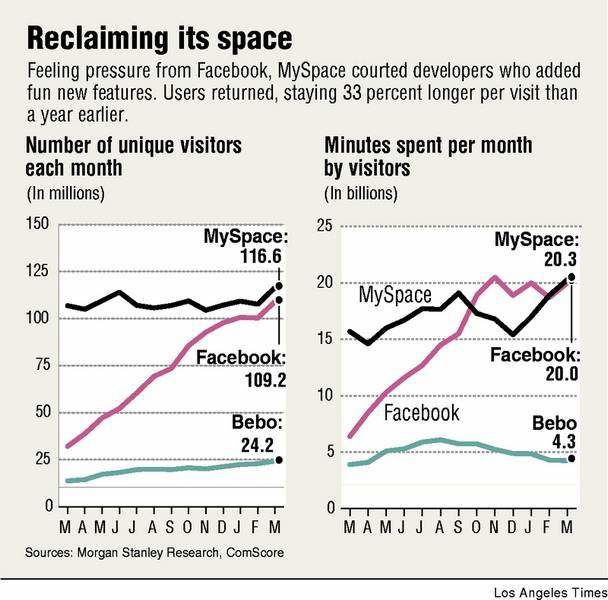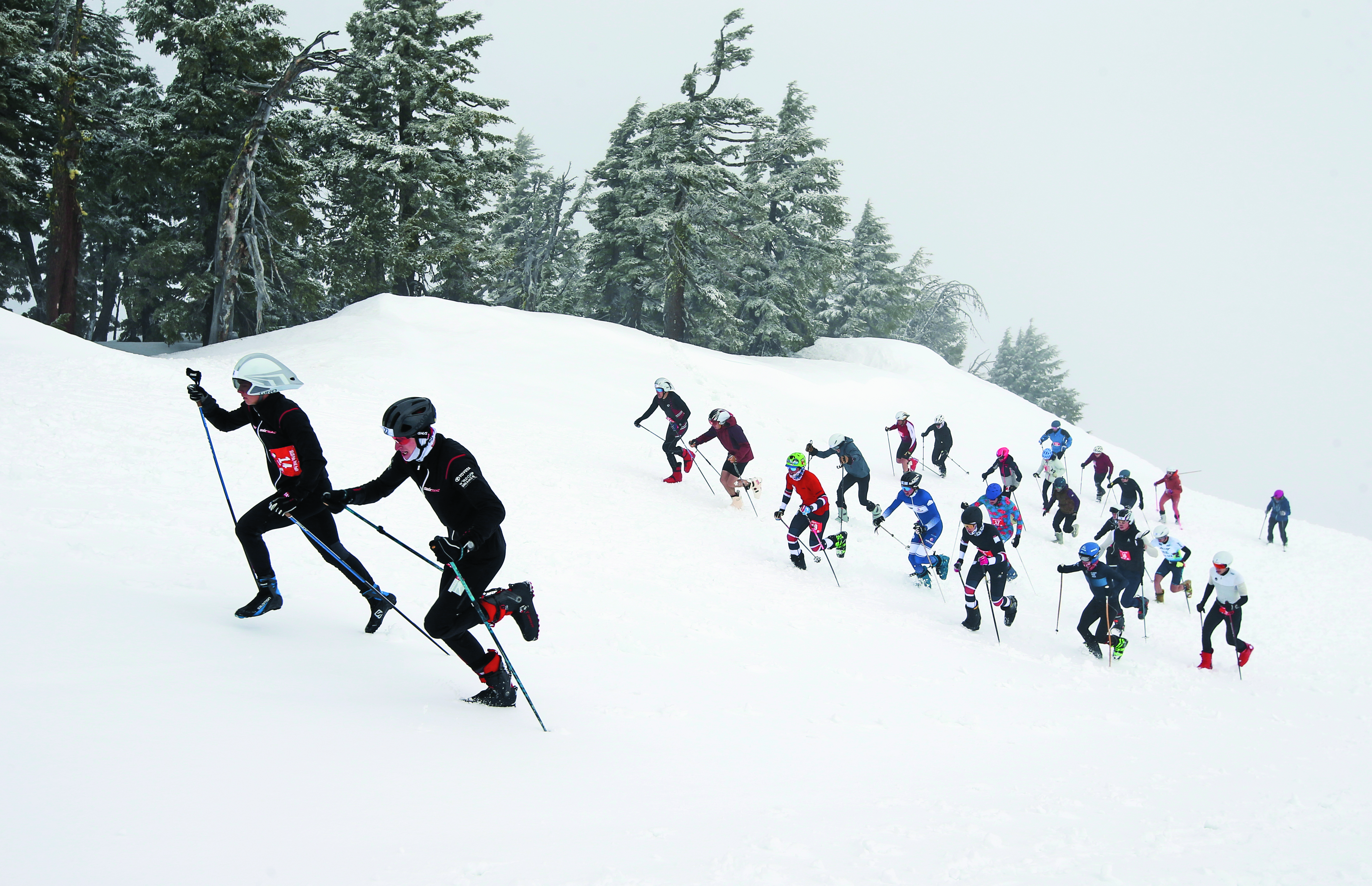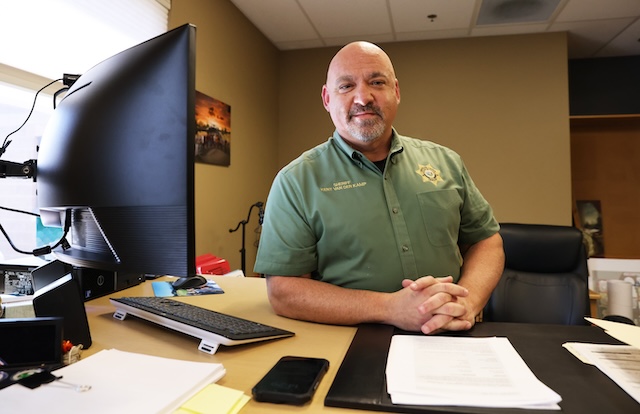MySpace clicks again after a profile update
Published 5:00 am Saturday, May 31, 2008

- MySpace clicks again after a profile update
Last fall, MySpace looked like a dance club in need of a new DJ.
Its users were spending less time on the social-networking site as upstart Facebook added new ones at a breakneck pace and stole the spotlight with splashy interactive features that MySpace lacked.
The final blow came in the form of an investment from Microsoft Corp. that gave Facebook an eye-popping $15 billion valuation. MySpace no longer seemed the jewel it was in 2005, when News Corp. Chairman Rupert Murdoch was hailed as a genius for snapping it up for $580 million.
“Facebook awoke the sleeping giant,” said social-networking expert Joseph Smarr, an engineer for online address book Plaxo Inc.
So MySpace went to Silicon Valley to get its mojo back. To counter the perception that it was a digital laggard run by Beverly Hills posers without technical chops, it set out to win over the inventive software developers who make the entertaining applications that keep users hanging around.
MySpace was the first to attract these developers with its mass audience, but Facebook had grown popular by allowing them to cash in on features they created that allowed users to throw food at each other (called FoodFight) or join social or political causes (called Causes).
MySpace decided to win back these developers by making it easier for them to make money from their viral creations.
A rebound
That campaign is beginning to pay off. About 1,000 new applications created for MySpace in the past two months by more than 10,000 developers have helped keep MySpace’s 117 million users on the site longer.
Earlier this month, some major Internet players — Yahoo Inc., eBay Inc. and hot startup Twitter — backed a MySpace initiative that lets users bring their profiles and network of friends to these sites.
Taking such a high-profile role in the high-tech world could help MySpace in another way: by turning its millions of users into advertising gold.
MySpace already has an edge. It attracts one in four Americans. Roughly 12 percent of the time spent online in the U.S. is on its pages. If it were a country, the site’s virtual community would rank as the 11th most populous nation, after Japan.
But MySpace, like other social networks, has struggled to make money from its online hangout. Its revenue growth, though up 49 percent per user over last year, fell short of guidance in the most recent quarter, prompting concern among Wall Street investors.
News Corp. President Peter Chernin blames the sluggishness on an excess of online advertising inventory, which has depressed prices, and the challenge of creating a new category of advertising that mines the wealth of data about users and their friends without alienating them. After all, people hang out on social networks to chat with their friends, not to buy products or services.
Even so, of the $1.4 billion that researcher eMarketer expects advertisers to spend this year on social networks in the U.S., MySpace is estimated to collect about 53 percent. And MySpace Chief Executive Chris DeWolfe said new initiatives, such as hyper-targeted advertising, show real promise. Chevrolet already has used hyper-targeting to display ads to MySpace’s snowboarders. Another ad project in trials now focuses on small businesses, allowing a dry cleaner to issue discount coupons to every soccer mom in a five-mile radius.
“We’re obviously huge believers in social media,” DeWolfe said. “We’ve been in business for four years. We’ve pioneered new revenue streams. … Now, it’s just a function of broadening relationships and leveraging the special capabilities we have.”
MySpace enjoys a unique position among social networks as a technology company incubated under Hollywood’s klieg lights. That helped pave the way for the recently announced MySpace Music joint venture with Universal Music Group, Sony BMG Music Entertainment and Warner Music Group. The venture takes the largest online music community and creates a marketplace, where people can listen to music for free or buy downloadable tracks, merchandise and concert tickets.
Humbling experience
For a market leader with such heft to be overtaken on the buzz meter by an upstart like Facebook was humbling.
Facebook’s initiative last May to invite developers to create entertaining features for its users was an instant success: It spawned what has been dubbed “the Facebook economy.” Facebook CEO Mark Zuckerberg announced the initiative at a packed event.
“Right now, social networks are closed platforms,” he said. “Today, we are going to end that.”
Soon developers were dreaming up all kinds of features, ranging from the practical, such as buying music or scouting vacation spots, to the quirky, such as biting your friends to turn them into zombies. The features spread quickly because users could alert their friends when they added them. As Facebook’s population skyrocketed, MySpace grew uneasy.
“Companies get complacent when they are in the top market position,” said Yanda Erlich, founder of Social.im, which makes instant messaging software for social networking sites. “But MySpace realized that if it just sat around and did nothing, Facebook was going to eat its lunch.”
The turning point came in October, on the two-year anniversary of News Corp.’s acquisition. With the average time spent by users declining, MySpace chose the technology industry confab, the Web 2.0 Summit, to signal its desire to put down roots in the high-tech community.
Sitting on a red couch alongside Murdoch in a packed hotel ballroom, DeWolfe spoke the words developers had longed to hear: MySpace was committed to opening up its platform, giving them access to a much larger audience. A month later, MySpace and Google Inc. announced OpenSocial, which established a common set of standards for developers to write programs for social networks. A bit geeky, it’s true. But it meant developers could spend their time dreaming up novel applications instead of thumbing through programming manuals to adapt the software for each individual network.
“It was one of the first steps on the Internet to create a truly open, truly social Internet that’s friendly to application developers,” DeWolfe said.
It won support among creators of Facebook’s most popular programs, including Slide, the San Francisco company that makes features that allow users to virtually ninja kick or throw sheep at friends; iLike, which lets them add music and videos to their profile, and Flixster, which enables the sharing of movie reviews and ratings.
“They have done this humongous about-face,” said Jia Shen, co-founder of RockYou, a leading provider of applications and widgets on the Web.






